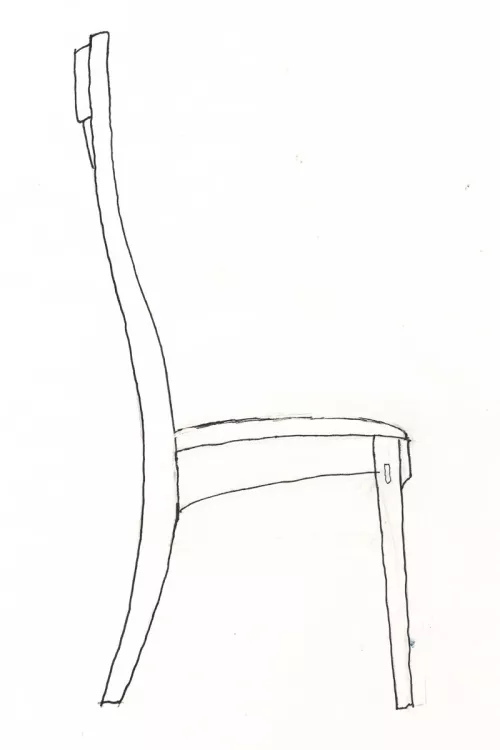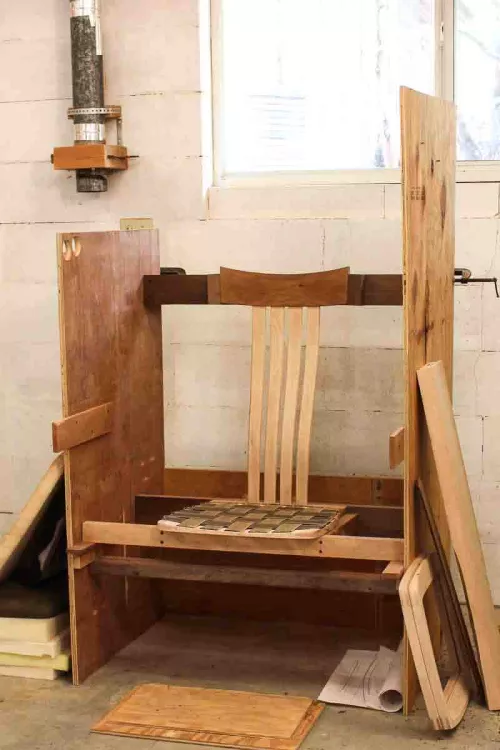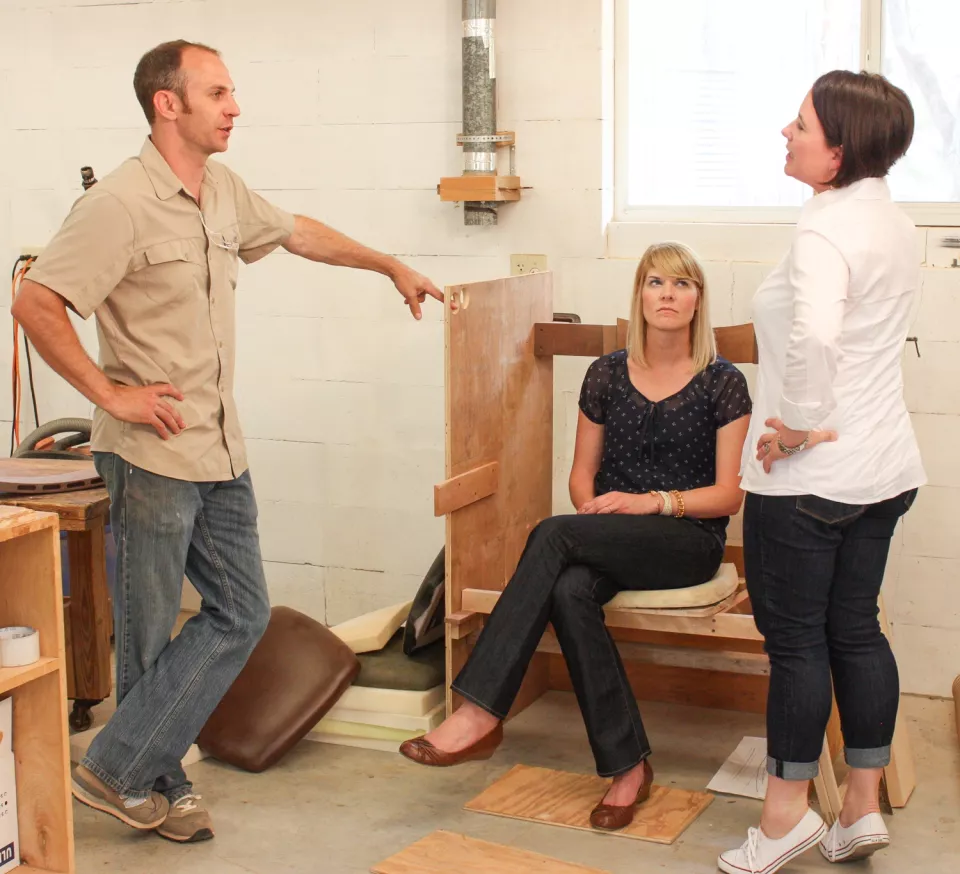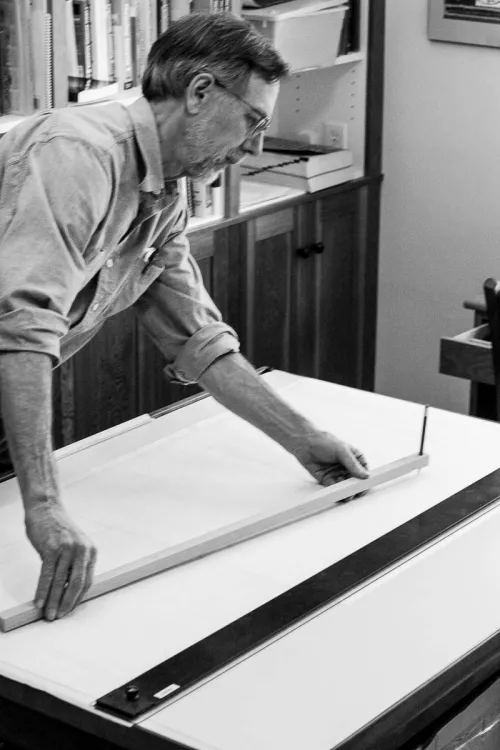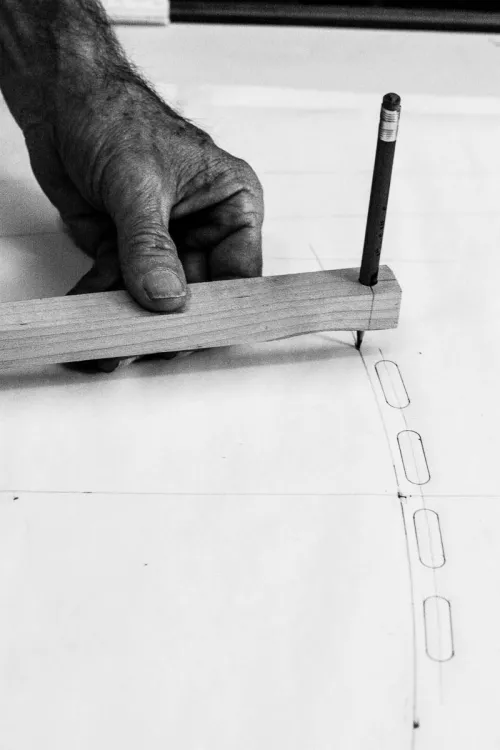How We Design a Chair
A chair is a difficult object. A skyscraper is almost easier.
Mies van der Rohe
We begin with a concept and a sketch.
We build a fitting booth and test the contour and placement of the parts as sketched.
From the points and planes revealed, we draw and build a prototype.
The Bell Curve of Heights
The photo below appeared in an article in the American Statistician (August, 2002. Volume 56, Number 3). The students were arranged by height. I found this article after making chairs for a decade and listening to the comments of sitters. It was an epiphany. We lose a few people at the extremes and a random few in the middle of this bell curve. But a very large percentage of people will find comfort in a mean and will exclaim, "Perfect."
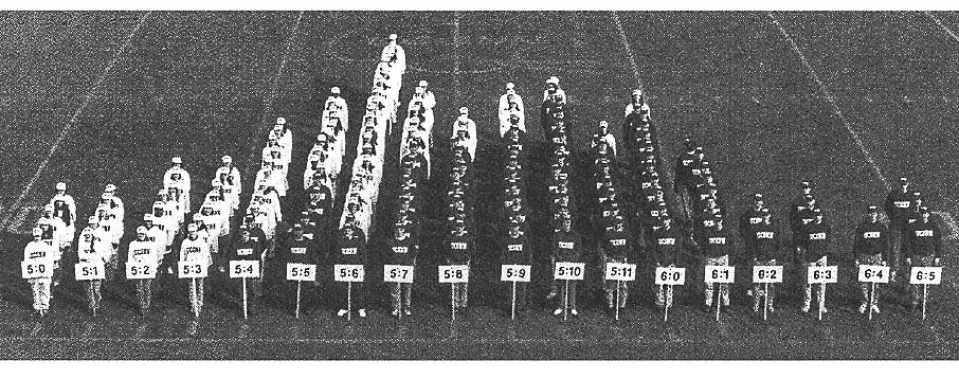
A Clarifying Observation
An orthopedic surgeon came to the shop. When I told him that short people and tall people would both say the chair fit, especially mentioning the lumbar support, he said, "Well, we are all about the same height from the coccyx to the top lumbar vertebra."
The Drawing Board
We take the set of points determined by the testing in the booth to the drawing board and lay them out in three views: overhead, side, and front. To develop a mechanical drawing and from it build a prototype, we adapt the sketch and what we learned at the booth to the points, refining line and form to the essence.

